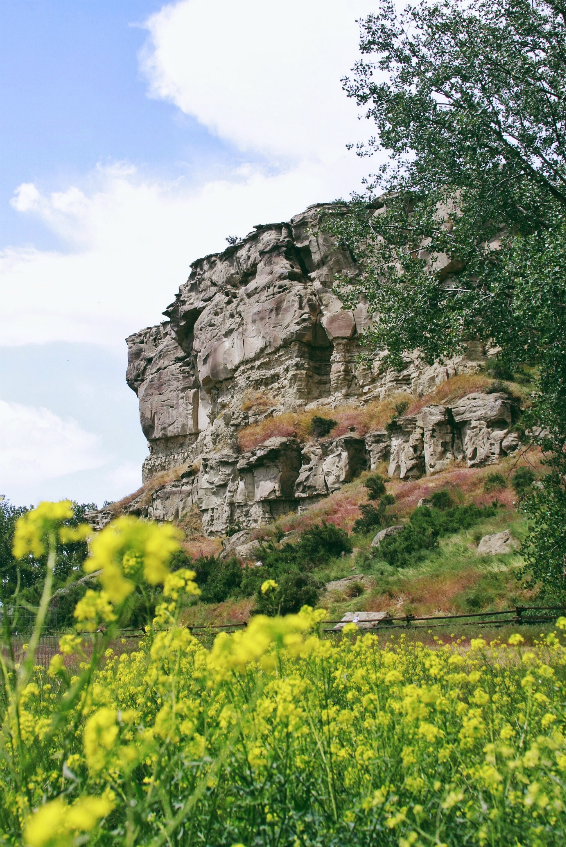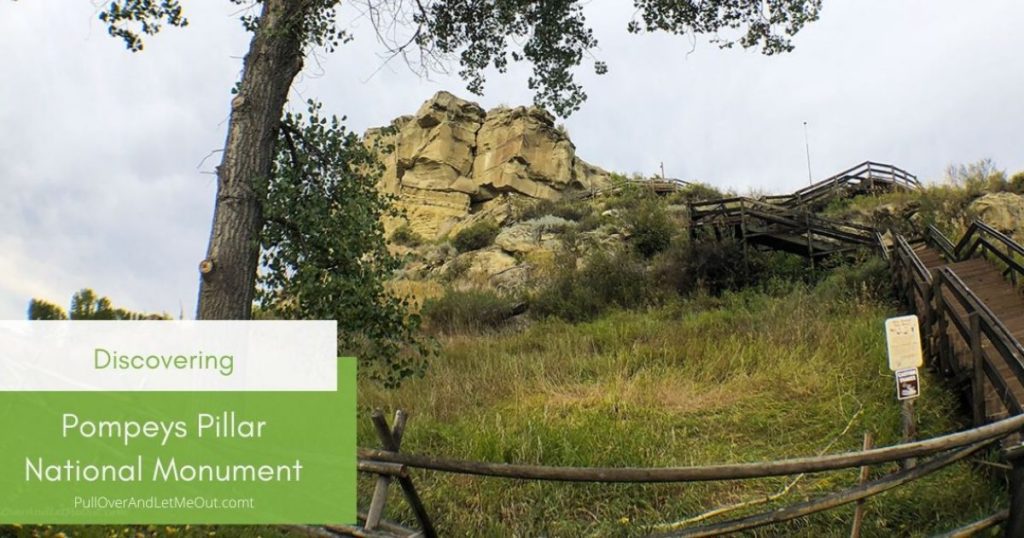1523 14th St. West, Ste. 2
Billings, MT 59102
Mailing Address:
P.O. Box 23535
Billings, MT 59104
Visiting the Pillar
Hours of Operation:
From October 1st through April 30th Pompeys Pillar is closed.
The Main Gate is open May 1st through September 30th from 8:30am to 4:30pm seven days a week.
The Interpretive Center is open May 1st through September 30th from 9AM to 4PM.
Even when the Monument is closed, visitors may still walk into the site during daylight hours. The walk from the gates to the Pillar is about 3/4 mile. Special arrangements can be made during the off-season for school programs and other special events.
Private Vehicle Standard Fees
Rates are based on number of passengers.
- 1-6 passengers–$7.50
- 7-25 passengers–$13
- 26+ passengers–$22
Commercial/Group Vehicle Fees
- Commercial group rates are based on vehicle capacity.
- Vehicles capable of seating 6 passengers and under–$25
- Vehicles capable of seating 7-25 passengers–$40
- Vehicles capable of seating 26+ passengers–$100
Boardwalk
The boardwalk up the Pillar leads to Clark’s signature and continues to the top of mesa. It is approximately 1,000 feet long and contains about 200 steps.
Day Use Area
The day use area is ideal for picnicking or relaxing. It is adjacent to the Yellowstone River and shaded by large cottonwood trees.
Accessibility
The interpretive center, restrooms, parking lot, and day use area are fully accessible.
Pets
Pets must be on a leash at all times.
Interpretive Center
The Pompeys Pillar Interpretive Center opened in 2006. Exhibits in the 5,700-square foot center relate the journey of Captain William Clark and his detachment, including Sacagawea and her son Pomp, down the Yellowstone River Valley in 1806. The center also addresses native culture, flora and fauna, the Lewis and Clark Expedition, and the historical legacy of Pompeys Pillar through the changes of the 1800s. A number of J.K. Ralston paintings and sketches are on permanent display.
Natural and Cultural Resources
Please respect our heritage and treat the Monument and its resources with respect. Do not deface any tree, shrub, rock, or ancient Indian artifact. Do not touch petroglyphs or remove any artifact. Not only is this illegal, but it erases evidence of past generations and deprives others of the knowledge about these sites.
Enjoy bird watching at Pompeys Pillar. The riparian areas, dominated by Cottonwood and Willow along the Yellowstone, are great habitat for warblers, vireos, tanagers, kingbirds, and other passerines. Great Horned owls as well as Bald Eagles and Osprey all nest either on site or nearby. The prairie to the south provides great habitat for falcons, sparrows, pheasant, and a variety of other species.
Enjoy the geological features of the Monument site. The Pillar and the cliffs across the river are composed of sandstones and shales. Although no animal or plant fossils have been documented at Pompeys Pillar, significant fossils have been found in similar sandstone beds nearby.
Directly north of the Pillar is a viewing area of the Yellowstone River, to which both trails and sidewalks lead. The Yellowstone River meanders and is the longest free-flowing river in the lower 48 states and provides rich, fertile farmland and habitat for many wildlife and bird species. The riparian areas along the river contain several cottonwood community types. Many standing cottonwood trees within the flood plain are estimated to be more than 100 years old.
Finally, for those who love a good picnic, there are tables set up throughout the monument. You are also more than welcome to place a blanket on the ground, or in one of our tipis, and have your lunch. The picnic tables are up year-round, so even if the Interpretive Center is closed, folks are still more than welcome to come in and use the area.
You can visit virtually at PPNM Virtual Tour or visit our YouTube channel at PPNM YouTube for more information. You can also view or download the PPNM Brochure, PPNM Map, or PPNM Rack Card.
Please visit on Facebook or Instagram websites for more information!








